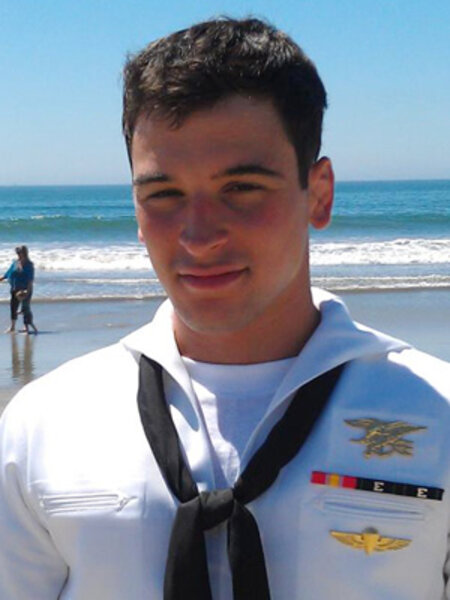SEAL dies Fort Knox: SEAL team member killed, others injured in accident
Loading...
| Louisville, Ky.
A Humvee carrying six Navy SEALs and two other sailors overturned during a training exercise at Fort Knox in Kentucky, killing one of the SEALs and injuring the others, military officials said Friday.
Lt. David Lloyd, a spokesman for the Naval Special Warfare Group Two in Virginia Beach, Va., said the Humvee was part of a convoy on the post when it overturned Wednesday night. What caused it to flip remains under investigation, he said.
The Navy said the SEAL who died was Special Warfare Operator Third Class Jonathan H. Kaloust, who was based at Joint Expeditionary Base Little Creek in Fort Story, Va.
The seven survivors were treated for minor injuries and released from a hospital, he said.
The sailors had been conducting tactical training, but Lloyd would not release further details about the exercise because it was considered sensitive.
Naval Special Warfare Group Two oversees a variety of operations, including reconnaissance and counterterrorism.
Kaloust, 23, of Massapequa, N.Y., joined the Navy in March 2011.
The US Navy has used the 170-square-mile Fort Knox as a training ground since World War II. The Army post is about 50 miles southwest of Louisville and is home to about 14,000 military personnel, including active duty members and reserves.
Although it is an Army post, it has been used by the Navy since World War II for various training exercises, including the testing of ship mock-ups before the actual vessels were used in combat.
The Navy had five units and about 247 sailors involved in external training support at the post in 2011.
"We go out there on a regular basis," Lloyd said.
Kentucky's Salt River runs through the Army base. According to the Federal Register, the Corps of Engineers considers sections of the Salt River that fall within Fort Knox to be danger zones.
The river is used almost year-round for training and live fire exercises involving artillery, tanks, helicopters and other weapons. Public access to the area is barred because there may be unexploded ordnance from military weapons.
According to the Navy News Service, the Navy also uses the Salt River, a major Ohio River tributary, to shoot recruiting videos.







